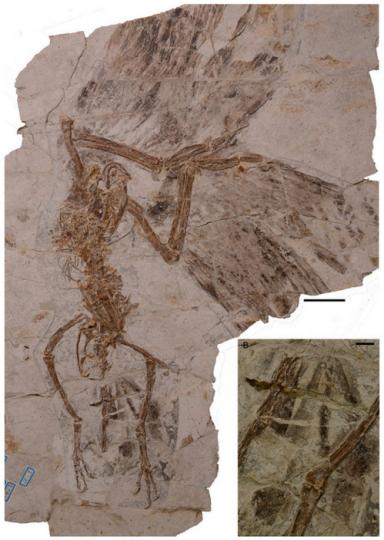
A modern bird-style tail has been found in the early bird Jeholornis, seen in detail in the inset. Credit: O’Connor et al/Chinese Academy of Sciences
Like the tails of modern birds, these formed an airfoil that could have provided control during flight, the researchers said.
Previously it had been thought Jeholornis only had feathers at the tip of its tail, largely useless for flight, similar to the tail feathers of some dinosaurs like the flightless Caudipteryx.
“We believe that the fan at the base of the tail mainly helps to streamline the body and reduce drag,” Zhou said. They could have also generated more lift than the feathers along the tail of the most primitive bird, Archaeopteryx, making it more useful for flight, he said.
The find raises new questions about feather evolution, leaving the place of Jeholornis in the avian family tree somewhat unclear, Michael Habib of the University of Southern California, who was not involved in the study, said.
“This could be an intermediate form or an ‘evolutionary experiment’, which left no descendants,” Habib told New Scientist.



 October 12th, 2013
October 12th, 2013  Riffin
Riffin  Posted in
Posted in  Tags:
Tags: 